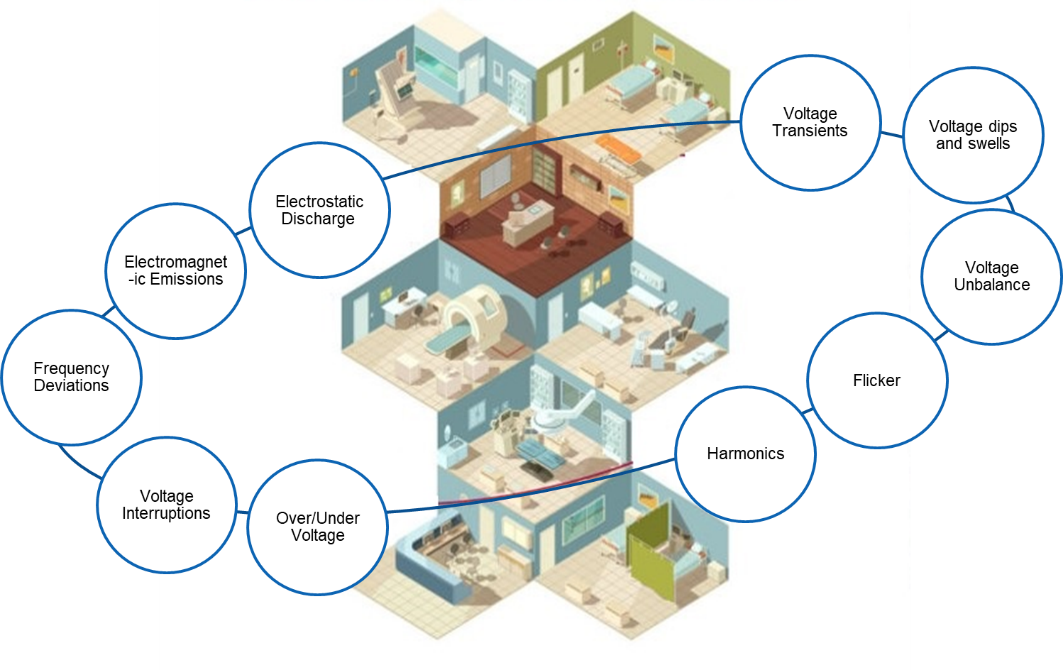Digitalization has taken over every walk of life, be it something as simple as buying a flight ticket, booking a movie, or ordering food. We are surrounded by innovations in technology like Additive Manufacturing, 3D Printing, Artificial Intelligence, IoT, Robotics, and more. Today artificial intelligence has worked wonders in arenas of problem-solving, learning, object detection, and others for household, industrial and commercial applications.
One of the prime areas where AI is proving its potential for innovations and breakthroughs is electrical safety. AI can help to reduce human intervention and drastically reduce the factor of human error. Data generated from images captured by mobile devices, unmanned aerial vehicles, CCTV cameras, and others enable electrical engineers and site managers to analyze the system and derive insights without being physically present at the site.
Electrical systems require regular maintenance, repairs, and upgrade to ensure that they are running at optimal levels and are compliant with industry standards, this calls for an effective electrical preventive maintenance program that ensures uninterrupted electrical distribution and prevents outage-related downtime.
When it comes to electrical safety in industries, the rate of fatal electrical accidents is much higher. Electric shock is one of the most common hazards, ranging from mild to life-threatening.
Other hazards include burns from live wire contact, fires from faulty wiring, overloading circuits, exposed electrical parts, electrocution or burns from lack of PPE, contact with overhead power lines, and electrical exposure to water. All these pose a great threat to people as well as property. As electricity is used in all sectors, it is imperative to recognize these hazards and create appropriate precautions to prevent them. It is also essential to have suitable control measures in place to handle such mishaps, as and when they occur.
The Changing Dynamics of Electrical Safety
Electrical safety has tremendous potential for advanced innovations to prevent hazards. The implementation of effective AI solutions gives users working in harsh electrical environments additional resources to ensure safety.
Consider a situation in which an engineer manually audits or inspects a high-voltage electrical system. Such system inspections and audits are crucial in ensuring the safety of the equipment and personnel who work on these types of equipment. As per OSHA standards and guidelines, it is mandatory to have labels, signs, and tags for such high-voltage areas and enclosures, equipment, boxes, etc. Various safety measures like restricting access or limited access to such areas /equipment to those who have proper training are already in place under standard operating procedure but still, there are chances of human errors. In such cases, AI can tremendously help ensure such procedures are correctly followed. The component of human error or negligence is reduced and the safety of personnel or operator is ensured.
Artificial Intelligence opens the door to the scenario that allows automated auditing without any human involvement. This will not only ensure the safety of the auditor but also leads to increased efficiency, the accuracy of the audit, and better decision-making. Many safeties issue can be identified at a very early stage and necessary corrective actions can be taken to reduce downtime, financial loss, and risk to the operator.
With the world getting more aware and conscious, and with new technology applications, the dynamics of electrical safety are changing drastically. Today companies are willing to invest more to ensure the safety of their workforce and property.
Benefits of AI in Electrical Safety Solutions
The efficient use of AI can bring a revolutionary change in the electrical safety domain. For starters, it eliminates human errors as there is no human involvement in the first place. The technology can take care of repetitive and time-consuming tasks with greater efficiency and accuracy, enabling human resources to concentrate on other important jobs.
Human intelligence may tend to miss certain parameters. But with well-constructed and predefined programs and logic, AI ensures that the entire process is seamless and foolproof. AI-powered solutions provide real-time monitoring, transferring data instantaneously and seamlessly from the site to the analytical team at a remote location. Thus, engineers can access the data from the field while sitting at their office without any time lag and make informed decisions immediately.
The use of AI can reduce electrical risks and can be used for continuous monitoring to ensure that safety protocols are maintained. An example of developing AI technologies is the use of existing installed CCTVs, which act like the eyes of the facility. The grabs from the CCTVs are sent to the servers, and the inbuilt AI-based algorithms in the server analyze the data input and identify it as an electrical or fire hazard in real-time. Accordingly, it triggers an automated response. With such AI-based solutions in place, results can be obtained in real-time and a major mishap can be averted.
Apart from this, AI-enabled solutions can provide additional information which helps in making informed decisions while servicing or troubleshooting electrical appliances. Smart digital labels like barcodes and QR codes can provide a more streamlined approach to collecting valuable data and instructions aiding in safety. These technologies help in prescribing mitigation solutions for machinery issues and suggest efficient ways to run a piece of equipment, such that the maintenance cycle is extended and optimized.
Even today, when it comes to electrical safety, traditional methods like the use of protective equipment (insulated tools) and alerting techniques (safety signs, safety symbols, accident prevention tags, barricades, and personal protective equipment) have an upper hand. AI-based tools can be used to avoid accidents occurring due to violations of safety equipment such as not wearing a helmet or safety goggles while inspecting an electrical panel. Such small violations can be captured and addressed in real-time. Providing comprehensive 360-degree monitoring without human involvement is the beauty of AI applications.
Electrical Safety Audits
Electricity has become an integral part of our everyday life and with the rapid growth of industries and commercial space, there is an exponential increase in the number of electrical accidents. The accidents not only cause loss of life but also negatively impact the business and the brand image. It lowers the morale of the employees. Thus, Electrical Safety Audits at regular intervals are of prime importance for any organization.
One of the developing technologies for electric safety audits is the application of AI-based solutions in place of humans at the facility. These smart solutions can provide continuous monitoring against the one-time audit results by an engineer visit.
It is often noticed that during an engineering audit, most of the systems are in place, exactly as per the set guidelines/standards. However, once the audit is over, the chances of alterations are always a possibility. In such a scenario, smart devices can send real-time information to the server with an AI-based algorithm recognizing the anomaly and triggering a response to the concerned person, thus preventing a tragedy.
AI-based solutions can ensure efficient monitoring, offer 24/7 safety surveillance, reduce human intervention and human error and, offer guided auditing through a mobile app. These tools have built-in intelligence to ensure compliance with standards and guaranteed customer satisfaction.
The AI- based electrical audit solutions can also provide visual proof of every anomaly with observation, recommendations, and standard references. It can offer total flexibility by customizing data points, audit processes, grading, report format, and content. Providing real-time data transfer and analysis, smart solutions can generate detailed reports within a few hours of audit completion. Thus, data captured through artificial intelligence and processed through machine learning can provide a holistic, A 360-degree approach to electrical audits.
The scope of AI is universal, it can be tailor-made for customer specifications and needs. These solutions can replace human intelligence to the best level of the applied algorithm by capturing the data and then utilizing it to the best use.
Going ahead – The scope & roadblocks
AI is certain to play an important role in reducing power distribution losses in emerging markets, helping with maintenance and reliability issues, and making electrical consumption safer and hassle-free. The use of AI for smart grids ensures that electricity flows as efficiently as possible, such as, in the case of disruption due to a faulty line or imbalances brought along by variable renewable energy penetration. In the next few years, AI can also help with the integration of renewable energy sources in power systems and will give operational autonomy to distributed energy resources and microgrids.
AI-based models are essentially black boxes to their users. When combined with better analytics, sensors, robotics, and IoT devices, they can be used for the automation of risky tasks, allowing humans to focus on other challenges. Although AI holds considerable potential in both emerging and advanced economies, it continues to face challenges in terms of affordability and the integration of renewable energy sources in the power system. Another challenge is building intelligence as per the customer’s demands.
Conclusion
Artificial Intelligence is here to stay and is already a game-changer in electrical safety solutions. In-depth analysis, better accuracy, and optimization without compromises are some of the basic expectations from these solutions. The traditional electrical safety methods combined with enhanced technology can work in sync to optimize safety and performance.
For more info or query contact us at https://jeftechno.com/contact-us




